As the saying goes, “you never get a second chance to make a first impression.” The same holds true for your home. This article will give you essential ‘tips for landscaping your home for maximum curb appeal’.
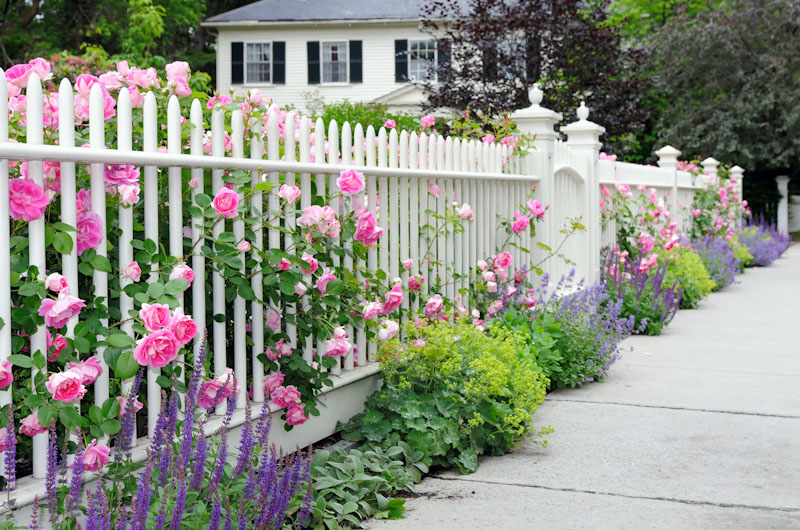
In this article, we’ll explore how to improve curb appeal, starting with why it matters.
Understanding the Importance of Curb Appeal
When it comes to owning a home, it’s important to remember that first impressions matter. Whether you’re trying to impress guests, potential buyers, or simply your neighbours, creating an great exterior can make a world of difference to your house’s curb appeal.

A well-manicured lawn, healthy plants, and thoughtful design choices can all contribute to the ‘wow’ factor. On the other hand, an unkempt space can be a turn-off and leave guests with a negative impression of your home before they even step inside.
First Impressions Matter

When it comes to curb appeal, there are a few key areas to focus on. First, consider your lawn care. Is the lawn green well-maintained and healthy, or does it look patchy and overgrown?
Next, take a look at your garden. Are your plants thriving, or are they wilted and dying? Consider adding some colourful flowers or shrubs to add visual interest and create a welcoming environment.
Finally, think about the overall design of your exterior. Are there any elements that could use some updating or refreshing? A fresh coat of paint for your black shutters, new shutters altogether, or updated light fixtures can all make a big impact.
Increasing Property Value

Attractive curb appeal can also increase the value of a house. An American study by the National Association of Realtors, found a home’s curb appeal can add up to 10% to its value. This means that investing in professional landscaping could pay off in the long run.
When it comes to boosting your home’s value, there are a few projects that tend to have the biggest impact. These include adding trees, installing a walkway, and creating a focal point, such as a water feature or garden sculpture.
By investing in these types of projects, you can produce a beautiful and functional outdoor space that will appeal to potential buyers.
Attracting Potential Buyers
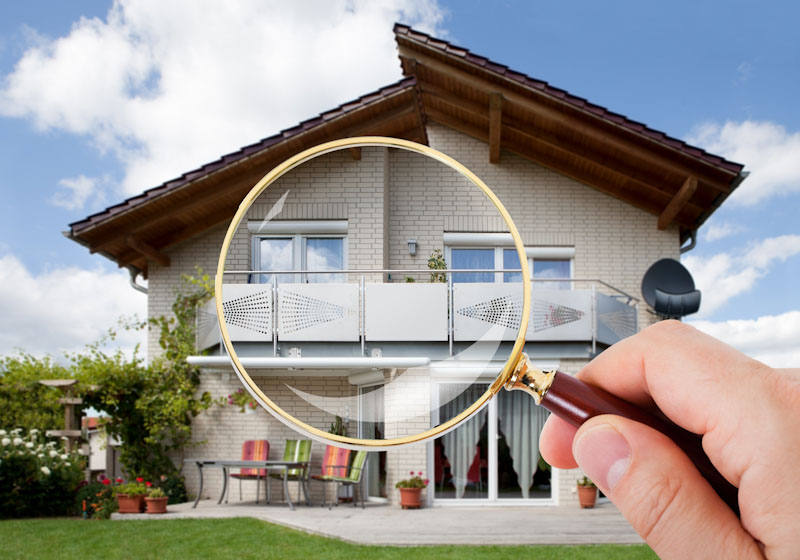
If you’re planning on selling your home, curb appeal is even more important. In fact, it’s one of the most important factors in determining whether potential buyers even want to view your home.
A beautiful exterior can create a sense of warmth and invite buyers to imagine themselves living in your home.
When it comes to selling your home, there are a few key areas to focus on. First, make sure your lawn and garden are well-maintained and visually appealing.
Consider adding some outdoor lighting to highlight your home’s best features and create a welcoming environment.
Finally, consider adding some outdoor seating or a small patio to build an outdoor living space that will appeal to potential buyers.
By taking the time to invest in your home’s curb appeal, you can design a beautiful and welcoming exterior that will impress your guests, increase your property value, and attract potential buyers.
Assessing Your Home’s Current Landscape
Having a beautiful and well-maintained landscape can greatly enhance the overall look and feel of your home. It not only adds to its curb appeal but also makes a welcoming and relaxing environment for you and your guests. However, before you can start planning your dream landscape, it’s important to assess your current situation and identify any problem areas.
Identifying Problem Areas
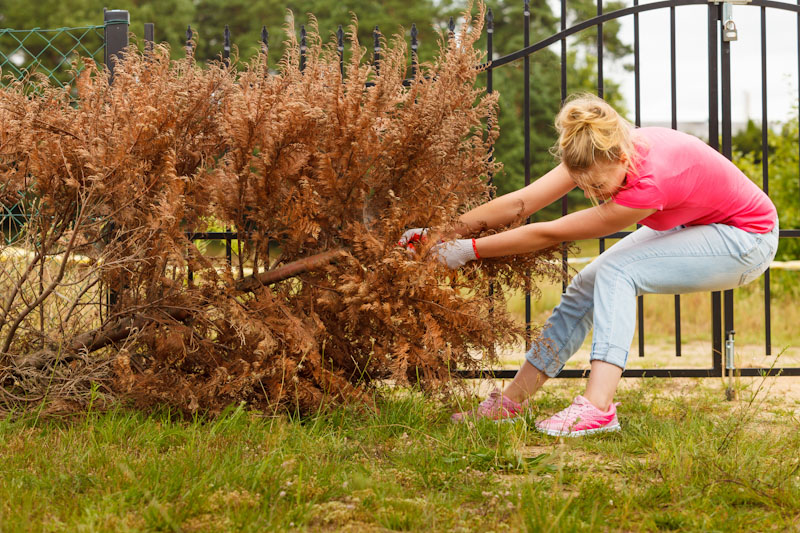
Take a walk around the front of your house and pay close attention to any areas that need improvement. Are there any dead shrubs or trees that need to be removed?
Are there any overgrown shrubs or bushes that need to be trimmed back?
Is there a lack of visual interest, such as an empty or barren area that could benefit from some decorative features?
Once you have identified the problem areas, make a list of the changes that need to be made. This will help you stay organized and focused as you move forward with your landscaping project.
Evaluating Existing Plants and Features
As you assess your current landscape, take a closer look at your existing planting and features. Are they working for you or against you?
Consider the size, shape, and location of each plant and feature. Are they in the right place, or would they be better suited in a different area? Are there any that are blocking a view or hindering the flow of foot traffic?
Make a list of the planting and features that you would like to keep, and consider ways to incorporate them into your new landscape design.
Determining Your Landscaping Goals

Before you start planning your new landscape, it’s important to determine your goals. What do you want to accomplish with your landscaping? Are you looking to add more colour, develop a sense of privacy, provide a lawn to play on, or simply enhance your home’s aesthetic appeal?
Take some time to think about what you want to achieve with your landscaping project. Consider your personal style and preferences, as well as any practical needs, such as creating a space for outdoor entertaining or adding a vegetable garden.
Having a clear idea of your landscaping goals will help you make informed decisions as you move forward with your project.
Designing Your Ideal Landscape
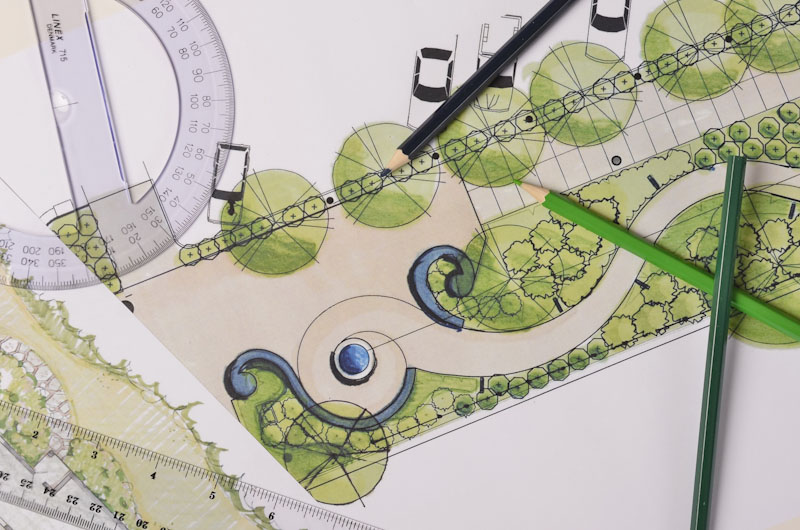
Designing your ideal landscape can be a fun and rewarding experience. An aesthetically pleasing landscape not only adds visual interest to your home, but it can also increase your property value. Here are some tips to help you design a landscape that complements your home and reflects your personal style.
Choosing a Style that Complements Your Home
When choosing a style for your landscape, it’s important to take into consideration your home’s architectural style.
It should complement and enhance your home, rather than clash with it.

For example, if you have a modern-style home, a minimalist landscape with simple geometric shapes and clean lines would be a good fit.
On the other hand, a cottage-style home could benefit from a more whimsical and colourful landscape.
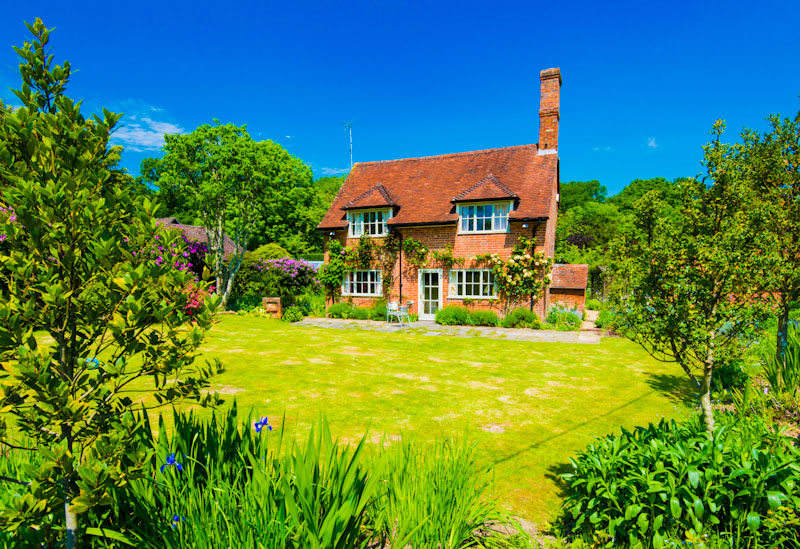
When selecting plants for your landscape, consider the colours and textures that will best complement your home’s exterior. For example, if you have a brick home with warm, earthy tones, you may want to choose plants with cool, complementary colours like blues and purples to create a striking contrast.
Incorporating Colour and Texture
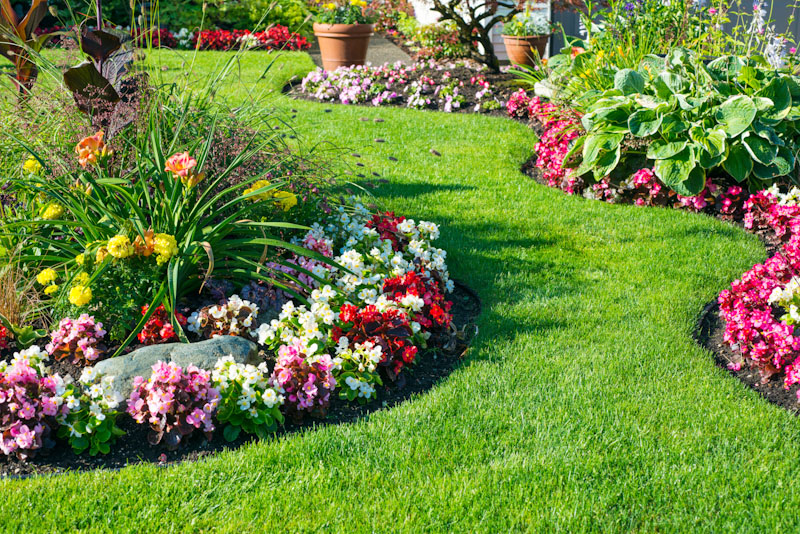
One way to add visual interest to your landscape is by incorporating colour and texture. Choose plants with different foliage shapes, sizes, and colours to produce a dynamic and eye-catching display. For example, mix tall, spiky plants like ornamental grasses with round, bushy plants like hydrangeas for a balanced and interesting look.
In addition to plants, incorporating hardscaping elements like walkways, retaining walls, and decorative rocks can also add texture and dimension to your yard.
Use materials that complement your home’s exterior, such as natural stone for a rustic look or sleek concrete for a modern feel. Don’t forget to repaint a peeling discoloured garage door.
Choose materials that echo your home’s exterior walls
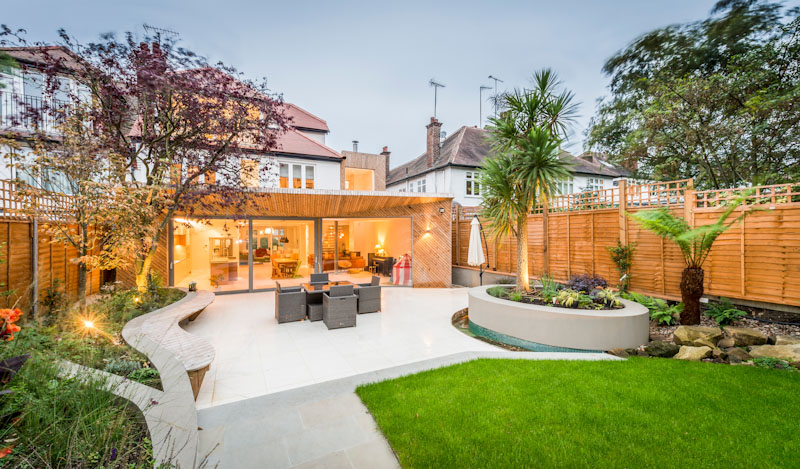
A well-designed landscape should strike a balance between hardscape (non-living elements) and soft cape (living elements). Too much hardscaping can make your yard feel cold and uninviting, while too much soft scaping can be overwhelming and difficult to maintain. Finding the right balance for your house, space and lifestyle is key.
When planning your landscape, consider how you will use the outdoor space of your house. Are you looking for low maintenance?
Do you need a large area for entertaining, or a quiet spot for relaxation?
Use hardscaping elements like patios and decks to make functional outdoor living spaces, and soft scaping elements like trees and shrubs to provide privacy and shade.
By following these tips and taking the time to plan your landscape, you can create an outdoor space that not only enhances the beauty of your home, but also provides a functional and enjoyable space for you and your family to enjoy for years to come.
Don’t forget to include a garden hose for the regular watering of grass and plants!
Creating an Inviting Front Door

Your front porch or front door is the first thing people see when they approach your home. Make it inviting by adding a pop of colour with potted plants or a wreath on the door. Not only will this add a touch of personality to your home, but it will also create a warm and welcoming atmosphere for guests.

In addition to plants and wreaths, you could also consider adding a seating area or water feature to create a sense of tranquillity and relaxation.
A water feature can add a soothing element to your outdoor space.
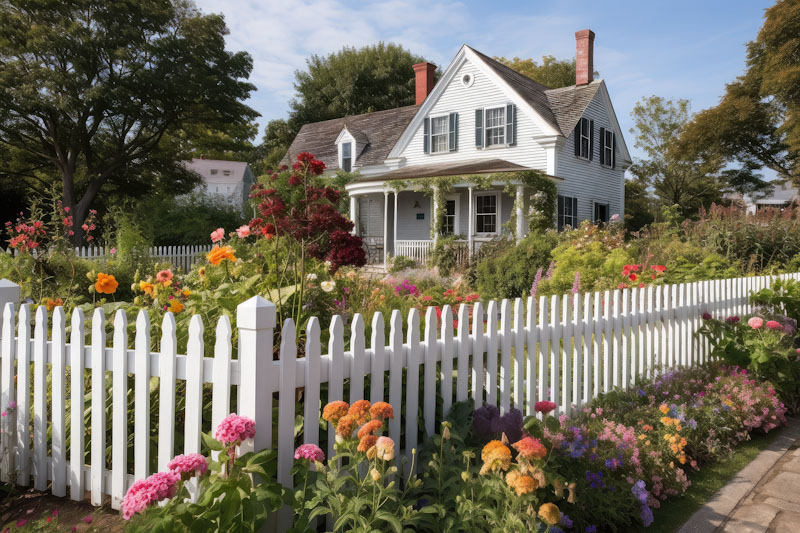
Add a decorative picket fence and a gate to your front yard or garden for more privacy. Frame the front door with vertical elements. Make the driveway blend in.
Remember that Delivery drivers always appreciate house numbers on a front door!
Upkeep
The curb appeal of your house will benefit from regular upkeep.
-
Maintain gardens.
-
Sweep walkways.
-
Clean your windows.
-
Paint or stain woodwork.
-
Replace missing roof tiles.
-
Repair wooden window frames.
-
And more!
A checklist can help you remember when to do these jobs.
Adding Visual Interest with Plants
Plants can add a lot of visual interest to your house. Consider adding a mix of different plants, from tall ornamental grasses to colourful flowering shrubs. This will produce a dynamic and diverse landscape that is sure to catch the eye of anyone passing by.
When selecting plants, be sure to choose ones that are appropriate for your climate and soil type. You can also mix in some annuals for seasonal interest. These plants will add a burst of colour to your yard during the spring and summer months.
Think about how well the colours of flowering plants will go together, and where best to put them in your garden beds. Consider using window boxes.
You will also have to with those pesky weeds in the flower beds! Fresh mulch will keep moisture in place, control weed growth, and shield plants from cold temperatures.
Need help? Consider hiring a landscape designer, or landscaping project manager, to boost your curb appeal.
Incorporating Lighting for Safety and Ambiance
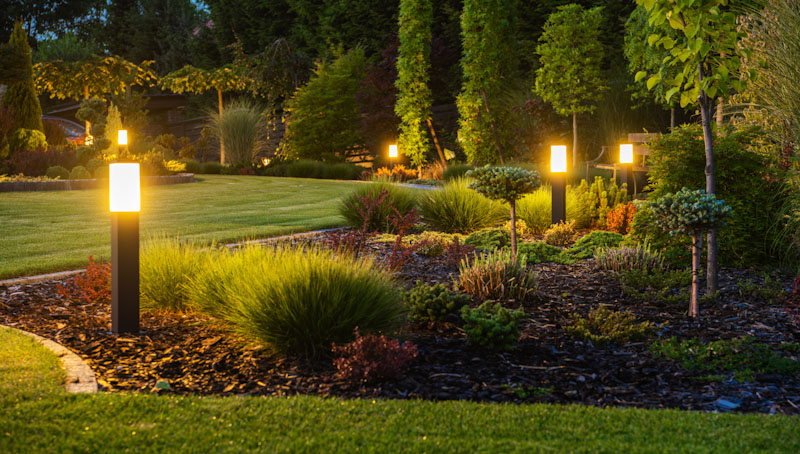
Finally, don’t forget about lighting. A home’s curb appeal can shine at night! Strategically placed landscape lighting can not only fashion an inviting ambiance, but also provide safety and security by illuminating a walkway or entrances.
Solar-powered lights are a great option for eco-conscious homeowners, as they are both energy-efficient and cost-effective.
When selecting lighting, consider the style of your home and outdoor space. For a modern house, sleek and minimalist lighting fixtures may be the best choice. For a more traditional home, ornate and decorative fixtures may be more appropriate.
Now Relax

Make your house ready for leisure time with garden furniture, a porch swing or rocking chairs. It isn’t all about landscaping, trees, lawns and flowers!
Improve Curb Appeal

Creating eye catching curb appeal for your home requires a combination of thoughtful design, landscaping, flowers, home improvement, maintenance, and attention to detail.
Your green lawn, swept front yard and clean front walkway will not go unmissed!
Look at homes like yours for more inspiration and other elements.
Remember the final product is well worth it, whether you’re looking to impress guests with a grand entrance, increase property value, or attract potential buyers.
By following these tips and focusing on what works best for your home’s architecture and your lifestyle, even casual passers by will stand and admire the curb appeal of your house.
Also read
See more Helpful Content
Visit our Homepage
